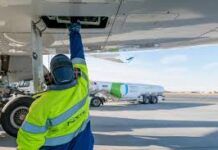AVweb’s General Aviation Accident Bulletin is taken from the pages of our sister publication,Aviation Safety magazine. All the reports listed here are preliminary and include only initial factual findings about crashes. You can learn more about the final probable cause on the NTSB’s website at www.ntsb.gov. Final reports appear about a year after the accident, although some take longer. Find out more about Aviation Safety at www.aviationsafetymagazine.com.
March 5, 2019, Fellsmere, Fla.
Piper PA-28-161 Warrior III
At 0703 Eastern time, the airplane was substantially damaged when it impacted trees and terrain. The solo student pilot was fatally injured. Instrument conditions prevailed.
The student pilot was conducting her second solo cross-country flight. Radar data revealed the airplane flew west before it made a series of left and right turns before the data ended about six minutes later. At that time, the airplane was in a right turn at 550 feet, a ground speed of 117 knots and heading 153 degrees. All major airplane components were located at the accident site.
The accident flight had been planned for the previous day, but weather forced its cancellation. The flight was rescheduled for 0600 the following morning. The instructor had endorsed the student for the previous day’s flight, and later stated the student was aware she needed another endorsement before the flight. Weather observed at the departure airport at 0703 included wind from 250 degrees at eight knots, visibility six miles in light rain and mist, and an overcast ceiling at 400 feet.
March 5, 2019, Statesboro, GA
Velocity RG Experimental
The airplane was destroyed by a post-crash fire at about 1500 Eastern time after impacting an approach lighting system and terrain while landing. The commercial pilot was not injured; the flight instructor sustained minor injuries. Visual conditions prevailed for the transition training flight.
The pilot stated they were on a stabilized final approach at about 100 knots, into a headwind gusting to 18 knots. On short final, the airplane sank abruptly and lost about 20 knots of airspeed at about 15-20 feet AGL. The pilot initiated a go-around procedure, added additional power and full aft stick but the right main landing gear struck an approach light. The airplane then “pancaked” onto the runway before coming to a stop. The pair exited the airplane before a post-crash fire ensued. Both pilots stated they believed they encountered wind shear on short final. At 1455, weather observed at the airport included wind from 320 degrees at 13 knots. At 1515, winds were 320 degrees at nine knots, gusting to 20 knots.
March 5, 2019, Atlantic Ocean
Cirrus SR22
At about 1000 Eastern time, the airplane was ditched about 25 miles southeast of Grand Turk, Turks and Caicos. The private pilot and a pilot-rated passenger sustained minor injuries. The airplane was not recovered and is presumed substantially damaged. Visual conditions prevailed.
The pilot reported that the yellow low oil pressure light illuminated about two hours into the flight. The oil pressure gauge confirmed the low oil pressure reading of 25 psi and, as oil pressure dropped to two psi, the engine vibrated strongly and the propeller stopped. The pilot established best glide speed and deployed the airframe parachute system at 1500 ft. The airplane landed in the water in an upright position. The life raft was inflated and the pilots egressed from the airplane. They were subsequently rescued by a passing cruise ship.
March 8, 2019, Leesburg, Fla.
Piper PA-31-325 Navajo C/R
The airplane was substantially damaged at about 1000 Eastern time when the right main landing gear collapsed. The solo private pilot was not injured. Visual conditions prevailed. During the airplane’s annual inspection, maintenance personnel suggested installing an inner landing gear door kit (STC SA00555DE). After the kit was installed, numerous test flights were conducted and all of them were unacceptable.
During landing gear extension, two green landing lights appeared but the right main landing gear was very slow to illuminate. Adjustments were made after each flight, and on the last flight while taxiing back to the ramp after landing, the right landing gear collapsed. Examination revealed buckling of the right inboard wing.
March 8, 2019, Pahokee, Fla.
Piper PA-23-250 Aztec
At about 1526 Eastern time, the airplane impacted a lake while its pilot attempted an emergency landing. The commercial pilot and four passengers were fatally injured. The airplane was destroyed. Visual conditions prevailed.
The pilot declared an emergency to ATC and reported a rough-running left engine, which subsequently was shut down. The pilot diverted to a nearby airport and was cleared to land. Witnesses observed the airplane in a 45-degree nose-and-left-wing-low rapid descent before it impacted the lake.
March 9, 2019, Longview, Texas
Cessna T337C Turbo Skymaster
The airplane was destroyed at about 1030 Central time when it struck trees and terrain during a descent. The private pilot and three passengers were fatally injured. Visual conditions prevailed.
The airplane departed Lancaster, Texas, at about 1000. A severe thunderstorm had passed through the area between 0730 and 0830 and weather for the takeoff was “clear.” Subsequently, the airplane was reported overdue. At around 1900, a hunter discovered the wreckage along a clearway established for an underground pipeline. Examination revealed highly fragmented sections of the fuselage, wings and empennage were widely distributed around the main wreckage. All control cable, skin and structure separations exhibited an appearance consistent with overload. A section of outboard wing leading edge was found about 072 degrees and 1.7 nm from the main wreckage.
The 51-year-old pilot held a private pilot certificate for single-engine land-based airplanes. His second-to-last logged flight was on May 7, 2005. The logbook’s last entry was dated August 23, 2018, and showed the pilot’s total flight time was 250.9 hours. At 1025, weather recorded about 10 nm from the accident site included wind from 220 degrees at 18 knots, gusting to 28 knots; visibility 10 sm in light thunderstorms and rain; scattered clouds at 2600 feet, broken clouds at 3200 feet and broken clouds at 9500 feet. Remarks stated that a thunderstorm began at 1025.
This article originally appeared in the June 2019 issue of Aviation Safety magazine.
For more great content like this, subscribe to Aviation Safety!


































